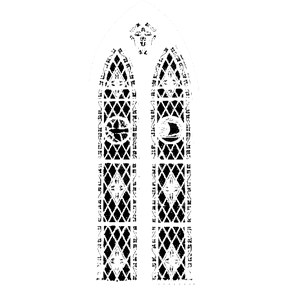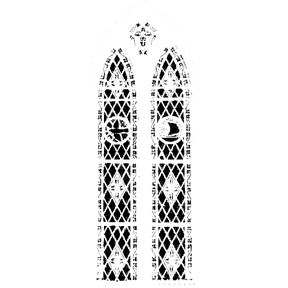Exodus 14: 19-31 (New Jerusalem Bible)
Exodus 15: 1-11, 20-21 (New Jerusalem Bible)
This combined reading from the Lectionary covers the most important event from the Hebrew Bible written. Except for the resurrection of Jesus, it’s the most important miracle in the Bible. But first, I have to break the news to you that Moses and the liberated Hebrews did not cross the Red Sea, but instead the smaller Reed Sea. Let me explain.
The oldest Biblical writings are always the most accurate because they’re closer to the time of the actual event. The Hebrew Bible was originally written in, of course, Hebrew. The Hebrew word in Exodus chapter 15, verse four, “yam suph”clearly means “Sea of Reeds.” Now, centuries later, A Greek translation of the Hebrew Bible was made in the year 132 BC. It was called the “Septuagint.” The Greek translators made a mistake and translated “yam suph” as Red Sea. Only a few Bibles use the correct term Reed Sea like the New Jerusalem Bible. Unfortunately, most Bibles keep the wrong term, Red Sea, just because of its tradition. But I’m not here to preach tradition. I’m here to preach the truth! Even though the Reed Sea is much smaller than the Red Sea, it still had enough water to drown the Egyptian army. Anyway, two of the most important figures of the 16th century Protestant Reformation, Martin Luther and John Calvin both agreed it was the Reed Sea that Moses parted and not the Red Sea.
Now in the past many historians and archaeologists had a hard time believing the Exodus story because there is no record of it in the ancient Egyptian writings. Well, there is a simple explanation for that. The Egyptian scribes did not want to write a record about the Egyptian army being defeated by slaves. It would make Egypt look weak to its enemies. So they ignored the event like it never happened. That is similar to what some politicians in America are trying to do today. They want to censor American history if it makes the United States look bad. And that is no way to teach real history.
And historians are divided when the Exodus happened. Some have it as early as 1447 BC when Thuthmosis III was Pharaoh. Others date it later to the year 1270 BC when Rameses was Pharaoh. But regardless of what year the Exodus happened, it did happen and it was a miracle.
Whoever the Pharaoh was, he began to have second thoughts about freeing the Hebrew slaves. The Hebrew slaves were the backbone of the Egyptian economy. The Pharaoh began to worry, what in the name of Osirus have I done? And so, as the vast power of the Egyptian economy wandered off toward the desert, the Pharaoh realized he had to do something, or his reign could come to an abrupt end.
So the Pharaoh gathered together the full force of his soldiers, chariots and horses in hot pursuit of the Hebrews. And the Hebrew people began their trek with their belongings on the backs of donkeys and their children asking, “are we there yet?” Just like children today.
And later, the Hebrew people began to panic. They realized they were in the middle of nowhere, stuck between the Pharaoh’s army and the Reed Sea. Fear kept them from going forward. And many were ready to return to Egypt, even as slaves.
But Moses was a good leader. Although not mentioned in the Bible, during his early life, Moses had a position in the Egyptian army. The 1st century Jewish historian, Josephus, wrote about Moses’ life. Moses had led the Egyptian army against the Ethiopians. The Ethiopian daughter of the king whose name was Tharbis, was so impressed by Moses’ valor, Tharbis sent a message to Moses that she would marry him if he would let the Ethiopians surrender in peace. Moses agreed to her proposal and did marry her. No doubt the first of several wives for Moses. And remember the early scene in the movie, “The 10 Commandments” with Moses’ triumphant return after victory in Ethiopia? I guess Cecil B. DeMille got that right.
But now Moses was under the command of God and not any Pharaoh. Moses knew that God had led him this far and since Moses realized he was the now the leader of the Hebrew people.
He didn't have much choice but to stand his ground.
But Moses remained firm while the chariots approached. And Moses who took God’s words very seriously turned his faith into action. Moses raised his hand and the waters of the Reed Sea began gently lapping outward. Before the worried eyes of the Hebrews, a path opened up through the very middle of the Reed Sea exposing dry land to walk on. All they had to do was to take the first step, sometimes the most difficult step to take,
The question was not, “will God bail us out” but will we have the courage to use our faith in God? And so they did. The Hebrew people set aside their fear, lifted their feet and walked right into the middle of the Reed Sea. It takes a lot of courage to walk in an area with walls of water on your left and right.
Now the movie producers in Hollywood are not the only ones to see the power of a true story and to fill in any gaps. The Jewish Rabbis have been doing that for centuries. It is called Midrash. Midrash is like a parable. It is a Jewish teaching tool that uses an explanation or story to give details for an old story found in the Hebrew Bible. Midrash is not considered scripture, although some are considered as truth. There is a Midrash writing about the parting of the Reed Sea that suggests the waters did not part with the sweep of Moses’ hand, until the Hebrew people started to wade into the water. It was their faith that triggered God’s miracle.
The Egyptian army believed they had Moses and his Hebrew followers completely trapped and cornered. But if you read Exodus 14: 19-20, the Angel of God, which had been out in front leading the Hebrews, moved to the rear of the Hebrews. This action created a buffer for the Hebrews against the Egyptian army while they were crossing the Reed Sea. They were surrounded by God’s protection.
And then, at the end? The former Hebrew slaves could hardly believe it. The Egyptian army, the most powerful military force in the world at that time, had been defeated by the hand of God. The corpses of the Egyptian soldiers are floating in the Reed Sea and on its shore.
Before they perished, the Egyptian soldiers probably came to realize the only living God was not their Pharaoh or the multiple gods worshiped in Egyptian temples. The real living God was Yahweh, the God of Moses. The same God who has the final say over Nature. But that knowledge came too late for the Egyptians. None survived their pursuit of the Hebrews.
Pharaoh and his army made the mistake of thinking they had had Moses and the Hebrews trapped by the Reed Sea, and victory would be easy. But the Egyptians greatest mistake was the fact, they were fighting against God, where they were bound to lose. Why I call the Exodus the second greatest miracle in the Bible is the fact the mighty Egyptian army was defeated, not by swords, spears and arrows, but by the power of God through Nature. This is the only story about battle in the Bible I want to preach about.
The song of victory by Miriam is also an important part of the Exodus story. Miriam was the sister of Moses and Aaron. She has also been called the singing prophetess. God has used Miriam from the very beginning of the Exodus story. Her most important act was to watch over her vulnerable newborn brother Moses and make sure he was delivered safely from the Nile River. And in God’s infinite wisdom, Miriam happens to be a master of subverting the patriarchal gaze that leaves her the space to flourish despite a male controlled society. Miriam is able to pray the kingdom of heaven down to earth while the patriarchal powers around her ignore it as just the noise of a girl or woman.
Here in some of the oldest writings in the Bible, Miriam’s song of victory lifts and leads the people of God in reflection on God’s miraculous deeds in their recent past as they prepare with God’s help for an uncertain future. After Miriam’s song was written, line by line, only a few of her words were written down. But what was written became a mantra for other women prophets who were raised up to be like Miriam. Miriam dances and celebrates at the banks of the Reed Sea. “Sing to Yahweh, for he has covered himself in glory, horse and rider, he has thrown into the sea.”
Miriam makes herself seen and heard in memorializing God’s deeds with tambourine, voice and dancing. All the women go out with her lifting their voices in poetic harmony. They praise God for lifting them from slavery and a journey toward a better future.
The Dr. Martin Luther King Jr. created a sermon in 1954 based on this Exodus story. He called it, “The Death of Evil on the Seashore.” In his sermon by this title, Dr. King called out the evils any could see in his own time. These included greed, racism and war including places where people are willing to sacrifice truth on the “altars of their self-interest,” and “imperialistic nations trampling over other nations with the iron feet of oppression.”
And Dr. King narrated racial desegregation as God’s work of ending and reordering the current system into something better. He saw the Reed Sea open in the US Supreme Court’s landmark decision in Brown v. Board of Education which ended the racist segregation in public schools.
Our world has changed and not changed in the 69 years since Dr. King gave that sermon. What shape does slavery take today? What does it take to dismantle the machinery of oppression, exploitation and the new colonialism that must be dismantled so God’s people can truly be free? Can we pierce through the cloud and gaze upon the shore and advocate the work that God is still doing, is very active and with our help, will bring these evils to a final end?
AMEN


